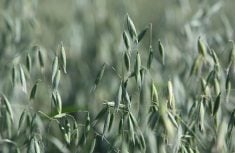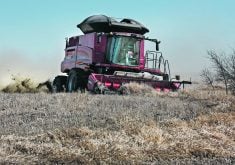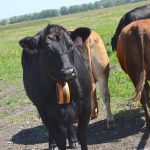A good growing year for oat producers meant a bad year for cultivating disease in the new crown rust nursery at the University of Saskatchewan in 2008.
“Environmental conditions were not conducive for developing it, but good for farmers,” said Curt McCartney, a plant pathologist with the Crop Development Centre.
Speaking at a Saskatchewan Oat Development Commission meeting in Saskatoon Jan. 13 during Crop Production Week, he called crown rust a significant disease in oats in eastern Saskatchewan and southern Manitoba.
“It steals sugar the flag leaf is producing and declines yields.”
Read Also

VIDEO: Ag in Motion documentary launches second season
The second season of the the Western Producer’s documentary series about Ag in Motion launched Oct. 8.
In trials last year, McCartney’s team struggled to make conditions wet and humid enough to grow the orange pustules caused by a fungus.
They reduce oat yield and cause thin kernels with less milling capacity.
McCartney is trying to identify crown rust resistance in seedlings and adult plants, extract the genes and breed them into emerging oat varieties.
It’s especially important because many oat varieties are no longer resistant. For breeders, that means as soon as new cultivars are developed with specific genes for resistance, the rust population develops new races to overcome this resistance.
Growers are advised to avoid severe infestations by planting oats early. The plants should be advanced enough by the time rust spores arrive to keep crops from suffering significant yield or quality loss.
In addition, growers can plant cultivars such as HiFi, recommended for registration in 2006, or CDC Boyer and CDC Dancer, which are more slow-rusting cultivars.
Foliar fungicides will also help manage the disease.














